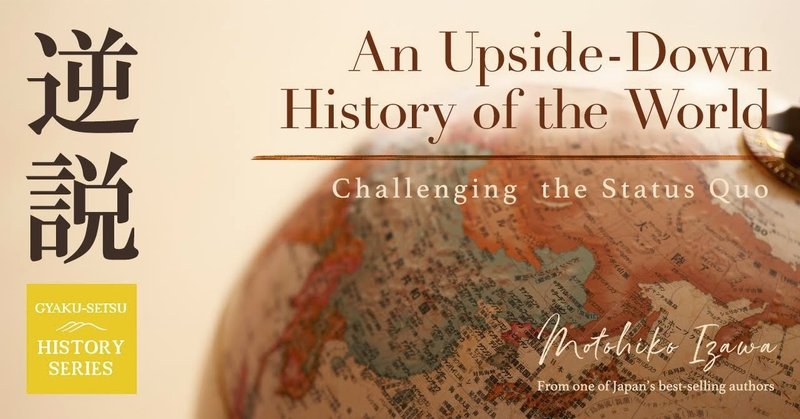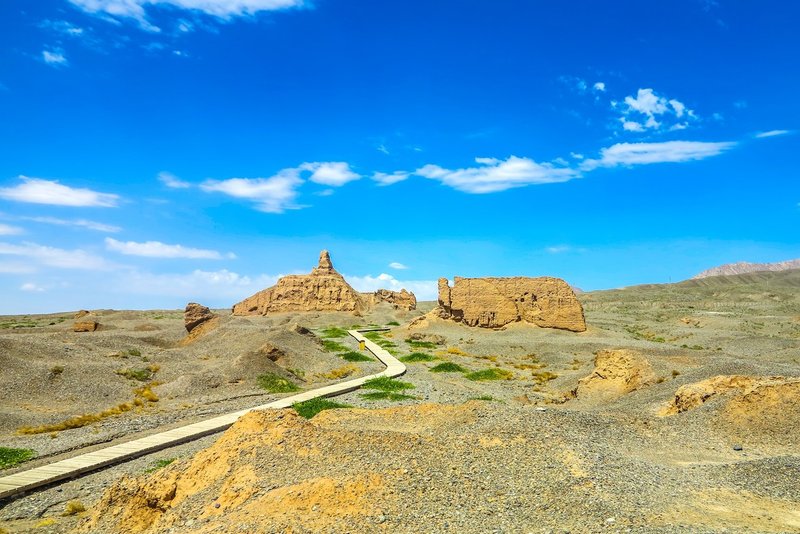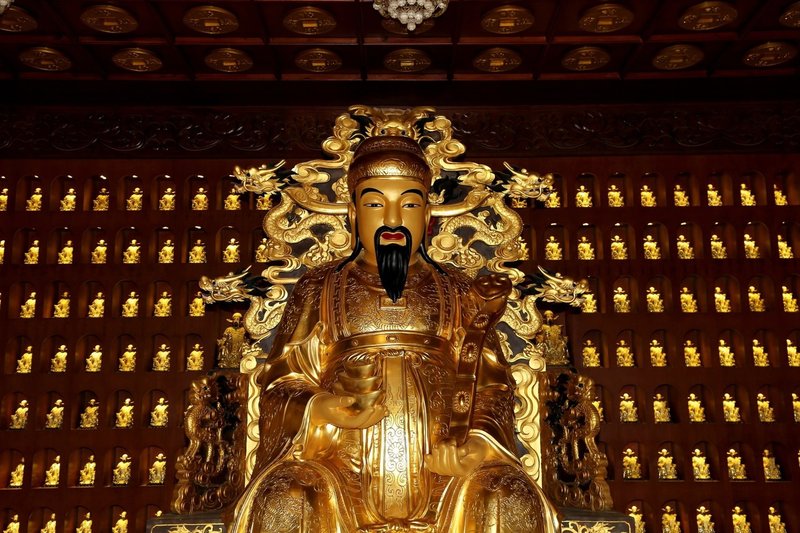
(103) Section 4: The Rise and Fall of Polytheistic Civilization II
Chapter 1: The Indus
8-2 The Silk Road and Buddhism in East Asia
In the previous installment, I discussed how the intersection of Ancient Greek and Buddhist culture in Gandhara became the impetus for the creation of the original Buddhist statuary. As Buddhism made its way from China to the Korean Peninsula and eventually to Japan along the Silk Road, Buddhist statuary took shape in a variety of materials, from sandstone to copper and wood. By the time Buddhism had achieved its first peak in Japan in 749, the terminus of the Silk Road, an initial high point in the world of Buddhist art and Mahayana Buddhism emerged in the form of the Great Buddha at Todai-ji in Nara, some two centuries after the religion made landfall on the island nation.
Still, despite its prominence throughout Asia, Mahayana Buddhism’s origins remain unclear. The consensus among most scholars is that it wasn’t India but rather somewhere on the Silk Road.
In my mind, there seems no answer more plausible than Gandhara. It was, after all, the region of polytheistic Greece and its worship of many gods. It’s important to keep in mind too that King Menander I was not a Buddhist. He was fascinated by the religion, and eagerly questioned the Buddhist sage Nagasena for more knowledge.
But Gandhara’s melding of Greek and Indian (Buddhist) culture wasn’t merely skin deep. The blending of cultures permeated religious beliefs, too.
Mahayana’s Transformation in Ancient China
Mahayana Buddhism achieved a great deal of development in ancient China.
Born in the latter half of the fourth century in the very culturally Chinese Silk Road state of Kucha (present-day Aksu Provence of Xinjiang Uyghur Autonomous Region), Kumarajiva (344-413 or 350-409) was the invited guest of the Qin dynasty for his gifted linguistic abilities, a man who went on to lay the foundation of Chinese Buddhism through his translations into Chinese the many Mayahayan texts that had reached the state of Kucha during his lifetime.
Kumarajiva was lauded in China as the Sanzang Fashi (literally “Sanzang [Triptaka] Dharma Teacher”) for his mastery of the three Buddhist texts that make up the Buddhist canon, Tripitaka: Sutta Piṭaka (teachings), the Vinaya Piṭaka (monastic rules), and the Abhidhamma Piṭaka (analysis and interpretation of doctrine).

△ Subash Buddhist temple ruins、Kuche, Xinjiang Uyghur Autonomous Region (China) © AlexelA
But future generations would witness the arrival of an even more talented translator—Xuanzang. A brilliant Buddhist monk, Xuanzang (602-664) showed extraordinary promise as a scholar of Chinese Buddhism and soon decided to journey to the motherland of Buddhism, violating the emperor’s ban on foreign travel and, after great hardship, arriving in India where he learned Sanskrit and refocused his Buddhist studies. On return to China, his violation was forgiven and was welcomed with significant praise and was even offered civil appointments by the emperor. Yet he refused and instead decided to devote himself to translating Buddhist texts into Chinese. His prolific translations make up about one-fourth of those created during the first wave of Chinese Buddhism.
Today on the grounds of Xi’an’s Daci'en Temple, you can visit the Giant Wild Goose Pagoda, which was constructed to house the Buddhist texts and statuary that Xuanzang brought back from India.
Xuanzang also wrote about his journey from China to India in the Great Tang Records on the Western Regions.
Rich with seventh century accounts of the Silk Road, Indian tradition, and topographical descriptions, Xuanzang’s travelogue became the inspiration for the fantastical Journey to the West, considered one of the Four Great Classic Novels of premodern Chinese fiction. The work is attributed to Wu Cheng'en, though it’s important to remember that at the time of the novel’s creation, the idea of copyright didn’t exist. Likely, the work is a patchwork of various authors. The true main character of the story, Sun Wukong, known commonly in English as the Monkey King, is perhaps best-known today around the world through the Japanese reading of his name, Son Goku, and as the inspiration of the leading hero of the anime sensation Dragon Ball.

△ Statue of Xuanzang, Dayan Tower in Xi'an, Shaanxi, China ©VLADJ55
Xuanzang is commonly known by the title Sanzang Fashi, but, as you probably noticed, this is the same alias given to Kumarajiva. Throughout Chinese history, many translator-monks who contributed to the dissemination of Buddhist teachings in Chinese took the title Sanzang Fashi, including not only Kumarajiva, but also another Buddhist monk and translator by the name Faxian. (To distinguish the great monk-translators, a hybrid name such as Faxian Sanzang or Xuanzan Sanzang was used.) It was the work of these great monk-translators that helped establish Buddhism in East Asia.
In Japan and the kingdoms of the Korean Peninsula, Buddhist scriptures were not translated into Korean or Japanese, but were used basically as-is in their translated Chinese form. In East Asia, ancient Chinese functioned much like Greek and Latin in Europe. Think of Sanskrit as Greek and Chinese as Latin. Of course, it wouldn’t be terribly unusual to write my name using the Japanese syllabary of either hiragana or katakana, but the norm in Japan still today is to use kanji for personal names.
But some five hundred years before Xuanzang’s Journey to the West emerged onto the Chinese literary scene, Kumarajiva’s translation of one of Mahayana’s most fundamental Buddhist scriptures, the Lotus Sutra, was changing the world of Chinese Buddhism.
The leading man in the changing landscape of Chinese Buddhism was the Sui dynasty Buddhist monk Zhiyi (538-597). Of all the Mahayanan scriptures, Zhiyi placed the greatest importance on the Lotus Sutra, concluding that all other sutras were merely the byproduct of the processes leading to its creation. Through his development of Lotus Sutra doctrine, Zhiyi (later called “Master Tiantai”), went on to found the Tiantai school of Buddhism on the basis of Lotus Sutra doctrine. So which scriptures of the Lotus Sutra exactly did he praise as essential?
It’s been said that if you really want to understand the classics, you must read the original. With that in mind, I once read the Chinese translation of the Lotus Sutra in its entirety, and I have to say, unless you are a Buddhist scholar, there really is no need to do the same. If you have the time, you would be better off spending the effort reading another classical work in its original form. Of course, none of this is meant to imply the Lotus Sutra is without importance.
For Mahayana believers, there is no greater sutra. But before I go any further, I should probably explain.
To start, the star of the Lotus Sutra is not surprisingly the Buddha, but not the historical Buddha you might suspect. Instead, the sutra features a divine Buddha transcendent of time and space known as the Shakyamuni Buddha. In the sutra, the Buddha explains that the ultimate teaching will be expounded to mankind. Much hinting and repeating later, we finally learn the ultimate teaching, but not in such clear terms. In essence, we learn that all beings have the potential to attain Buddhahood.
For example, in Chapter 21 of the Lotus Sutra, “The Spiritual Power of the Tathagata,” the Buddha states that, “the wise, hearing of the benefits of these merits, should preserve this sutra after my nirvana. Those people will be resolute and will Unwaveringly follow the buddha path.” (The Lotus Sutra, trans. Tsugunari Kubo and Akira Yuyama [Berkeley: Numata Center for Buddhist Translation and Research, 2007]) In a fairly roundabout way, the statement is that, for those who believe in the teachings of the Lotus Sutra, enlightenment will be within reach.
While the sutra clearly states one should believe, one is ultimately left with one question: how does one achieve enlightenment and become a Buddha? The answer to this question became the foremost focus of Japanese Buddhism, the terminus of the Silk Road and inheritor of Tiantai Buddhism.
The Japanese take on Mahayana Buddhism, however, left many traditional Buddhists wondering, is this Buddhism at all?
< Read the next installment June15 >
Editor/ Noriko Knickerbocker , Aquarius Ltd.
Translator/ Matthew Hunter , Aquarius Ltd.
©Motohiko Izawa 2018-2019 All rights reserved. No reproduction or republication without written permission.
Izawa tackles for the first time the mysteries of the world in a historical journey of intrigue and cross-cultural understanding.
